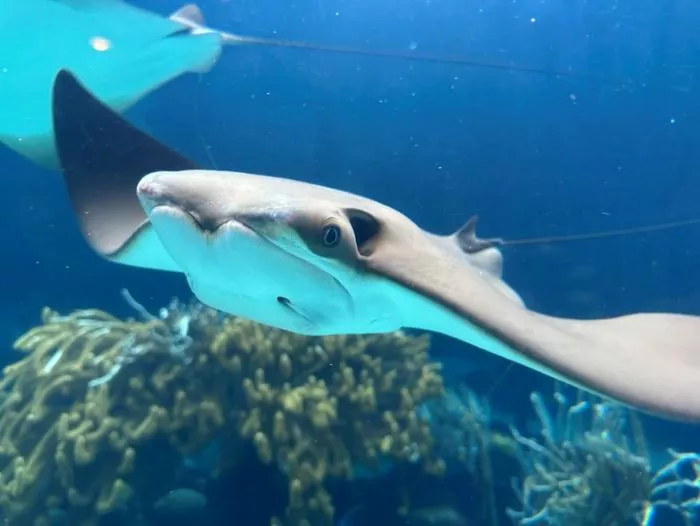Have Cownose Rays Sniffed Out a New Home in Bermuda?
Study confirms that cownose rays can now be found in Bermuda waters, a new development that may be caused by atmospheric conditions.
The whitespotted eagle ray has been the only inshore stingray species in Bermuda for hundreds of years.
Not anymore, according to a study.
The presence of the Atlantic cownose ray in the area has been confirmed, 1,000km away from where they are normally found, along the continental shelf of the Atlantic US coast.
This conclusion was reached after researchers examined a myriad of clues: photographs from citizen scientists, personal communications with fisheries personnel, and on-water observations and collections conducted by the researchers. DNA samples have also been taken from five cownose rays between 2021 and 2022.
“We don’t exactly know how many Atlantic cownose rays are actually present in Bermuda and whether it’s a single group that keeps getting re-sighted in various locations or whether the species is more broadly distributed across inshore sounds and harbors,” said lead author Matt Ajemian, Ph.D., an associate research professor and director of the Fisheries Ecology and Conservation Lab at Florida Atlantic University's Harbor Branch Oceanographic Institute.
Questions abound
The study examined the rays' uncharacteristic journey to Bermuda, perhaps facilitated by unusual weather patterns and shifts in ocean currents that echo historical anomalies, like the seaweed displacement events and tropical storms of the past decade. These conditions echo those of the early 17th century, when the Sea Venture shipwrecked on Bermuda's shores—a historical parallel that adds intrigue to the rays' recent arrival.
Whether the species has become a permanent resident or whether it is a seasonal occupant is yet to be determined. But according to Ajermian, "We're seeing evidence that suggests these rays are not just passing through but may be staying longer, perhaps due to the mild sea temperatures around Bermuda."
Limited population growth
Interestingly, all the observed cownose rays have been female and immature rays. Although no males have yet been spotted, there was evidence of their presence, in the form of close following and the biting of pectoral fins.
Researchers continue to monitor the cownose ray population, which is not expected to grow drastically. “If cownose rays continue to survive in Bermuda waters, the species’ low fertility rate of one pup per year will limit its capacity for rapid population growth, which is why we greatly need a more accurate assessment of the current population size.”




























